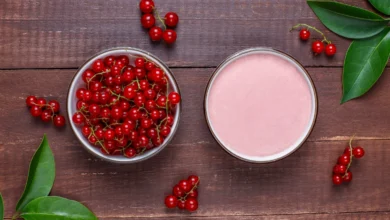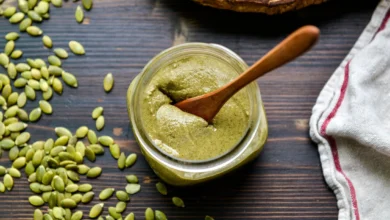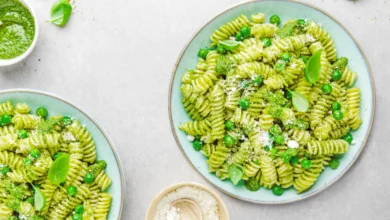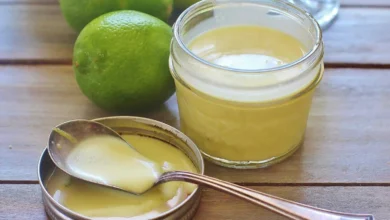Roasted Red Pepper and Garlic Tapenade: Here is How!
As someone who enjoys cooking Mediterranean dishes, I was first introduced to tapenade years ago while vacationing in the south of France. On every corner, you would find delicious spreads made from finely chopped olives, capers, and anchovies. One of my favorites is black olive tapenade, which the locals would enjoy as a condiment spread on freshly baked bread or alongside appetizers like pita chips or crostini.
When exploring new recipes after returning home, I wanted to put my own spin on a classic tapenade. Inspired by the flavors of Provence, I decided to try combining roasted red peppers and garlic to create a vibrantly coloured condiment. The sweet smokiness of the roasted vegetables pairs wonderfully with briny olives and capers. Like other tapenades, it makes a flavourful snack on its own or appetizer dip. However, I also enjoy using it in unexpected ways, like as a marinade for meat or poultry before grilling. The smooth and creamy texture also makes it a delicious pasta sauce or addition to sauces when cooking.


Personally, the blend of roasted red pepper, garlic, olives, capers, and anchovies has become a staple in my kitchen. Whether using it as a spread, appetizer, marinade, sauce or more, it adds tremendous flavour to any dish. The versatility of tapenade allows for much creativity in the kitchen and meal planning. I hope others can appreciate the culinary tradition of the South of France through reinventing this classic condiment with roasted red peppers and garlic.
Contents
- Roasted Red Pepper and Garlic Tapenade
- What is a Traditional Tapenade Made Of?
- Traditional Tapenade Recipe
- What is Red Pepper Tapenade?
- What Does Red Pepper Tapenade Taste Like?
- Ingredients and substitutes
- Step-by-step instructions
- Roast Garlic
- Make the Tapenade
- How to Serve Roasted Pepper Tapenade
- Nutrition Facts
- How Long Does Red Pepper Tapenade Last in the Fridge?
- How to Store Roasted Red Pepper Tapenade
- What to Serve Roasted Red Tapenade With?
- Roasted Red Pepper Tapenade Uses
- Olive and Roasted Red Pepper Tapenade
- Roasted Garlic Tapenade
- FAQs
Roasted Red Pepper and Garlic Tapenade
Today I want to share with you a tasty recipe – roasted red pepper and garlic tapenade! I’ll explain how you can make this colorful spread and some fun ways to serve it up.
What is a Traditional Tapenade Made Of?
A traditional tapenade is a spread originating from the Mediterranean, specifically the southern province of Provençal in France. At its core, a tapenade consists of a balanced blend of key ingredients that come together to create its signature flavour profile. Two of the primary components in an authentic tapenade are olives, namely black olives like kalamata olives. Both olives provide their rich, briny taste that serves as one of the foundation flavours of this condiment.
Another ingredient essential to any traditional tapenade is anchovies. Small anchovies contribute an incredibly salty and savory essence like the ocean in a bite. Alongside anchovies, capers are used which lend a bright, tangy and slightly acidic note. Garlic also features heavily, as it is practically ubiquitous in Mediterranean cuisine. When finely chopped, garlic infuses the entire mixture with its potent yet balanced pungent flavor.
To achieve the final texture, high-quality extra virgin olive oil is incorporated into the ingredients and blended until homogenous. This creates a smooth and luscious spreadability. With such a simple recipe focusing on these key components, their harmonious balance results in intense yet complex flavors. Optional additions like fresh herbs, lemon juice or seasonings can further enhance the full roundness of flavors in a traditional tapenade.
Traditional Tapenade Recipe
Few Mediterranean style condiments are as versatile and enjoyed as a classic tapenade. While travelling through France, I saw how locals would slather it onto warm bread or eat alongside appetizers. Inspired by these memories, I wanted to try recreating an authentic traditional tapenade recipe to appreciate its essence of Mediterranean culinary heritage.
The ingredients I used included kalamata olives, salt-cured anchovies, capers, garlic, and extra virgin olive oil from my local market. First, I finely chopped the olives, anchovies, capers, and garlic until almost a paste-like consistency formed. Then, I blended in the olive oil a tablespoon at a time until a spreadable texture resulted. The bright flavors truly sang through – briny, tangy, and rich all at once.
While most enjoy it as a spread, I’ve found this traditional tapenade to be incredibly versatile. It adds unmatched flavor to simply grilled fish or meats. I also like mixing a dollop into pasta salads or veggie dips. Most importantly, recreating authentic recipes connects me to fond travels. I hope others are inspired to try their hand at this traditional tapenade recipe and experience a taste of the Mediterranean.
What is Red Pepper Tapenade?
Having grown fond of traditional tapenade, I wanted to put my own spin on the recipe using seasonal local ingredients. This is how my roasted red pepper tapenade came to be. Rather than black olives, the true star ingredient became roasted red bell peppers. Their bright pop of color and vividly vibrant flavor made them a perfect choice.
By charring red peppers over an open flame or in the oven until blackened, their inherent sweetness really shines through. After roasting, I peel away the charred skin to reveal soft, tender flesh. Then, I finely chop the peppers and stir them into a classic olive, caper, and anchovy tapenade mixture. Instead of olives dominating, the roasted red peppers truly take center stage.
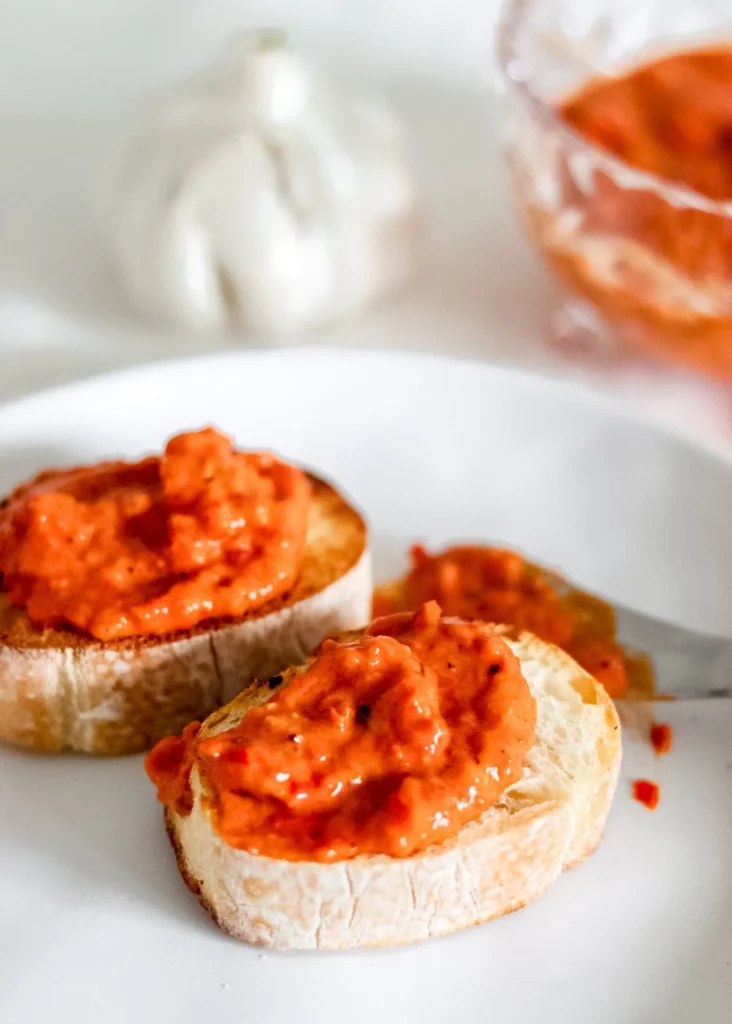

A splash of extra virgin olive oil binds the ingredients into a cohesive yet flavorful spread. A handful of chopped garlic and some Italian seasonings like oregano round out the flavors. The result is a tapenade that amplifies the natural taste of late summer vegetables. It has become my new favorite way to enjoy roasted red bell peppers beyond just eating them plain.
What Does Red Pepper Tapenade Taste Like?
The primary flavors of red pepper tapenade shine through brightly due its roasted red peppers. Roasted peppers develop an enticing sweet, smoky flavor unlike their raw counterparts. This tapenade allows that roasted pepper taste to really sing. Alongside the pepper’s natural sweetness, a hint of garlic lends just the right amount of aromatic pungency.
A generous pour of extra virgin olive oil gives the spread its signature silky texture and richness. As someone who enjoys cooking, I appreciated how this red pepper tapenade could be enjoyed straight as a dip or sparingly spread onto bread and crackers like a condiment. Its versatility meant enhancing the flavors of numerous dishes beyond simple snacking.
Visually, the vibrant bright color also draws you in. But more than aesthetics, its truly robust taste won me over for its versatility as a delightful addition to my culinary repertoire. Overall, this tapenade captures all the best qualities of roasted vegetables, briny ingredients, and aromatic herbs in a single, intensely satisfying spread.
Ingredients and substitutes
Red Peppers
The star ingredient is red peppers which provide vibrant color and tastes delicious when roasted. Same, better or orange peppers work just as well and taste delicious when roasted.
Garlic
While traditional tapenade uses garlic, roasted garlic goes thru a complete makeover and changes its pungent, strong, smelling, spice to a more sweet, flavorful, spread for its own.
Olive Oil
A good quality olive oil is important for the proper texture and delicious spreading almostanything .You can use everything but make sure absolutely love flavored oils like avocado oil, chilly flavored, yes, yum.
Combined and Shuffled
When delicious, garlic, roasted, orange, strong, roasted, olive oil, red, makeover, quality, flavorful, make sure, sweet, good, pungent, oil, absolutely love, anything, everything, spread, avocado, yes, chilly, yum are combined , the result is flavorful blend due to roasted garlic and the red color from roasted peppers.
Step-by-step instructions
Prepare the Peppers
Wash and clean 2-3 large red peppers. Cut them in half lengthwise and remove the cores and seeds.
Lay on Baking Tray
Lay pepper halves skin side down on a baking tray lined with aluminum foil.
Place on Foil
Place roasted red peppers cut side down on the foiled tray.
Roast in Oven
Bake in the preheated oven at 200°C/390°F for 30 minutes.
Turn Halfway
Turn the pepper halves over halfway through so the skins side up to char evenly.
Remove from Oven
Once the skins are well charred and blackened, remove the tray from the oven.
Leave on Tray
Leave the roasted red peppers on the baking tray covered with the aluminium foil.
Wrap Tray
Gather the foil corners up and overwrap the whole tray of peppers securely.
Allow to Cool
Allow the wrapped roasted red peppers to cool for 10 minutes. This helps the skin to peel off more easily later.
Remove Skins
Once cooled, gently rub the skins off the peppers under cold running water. Give another 10 minutes for the skins to fully separate from the flesh.
Use in Recipes
With the skins removed, the roasted red peppers are ready to use in tapenade recipes.
Roast Garlic
- Remove any loose or damaged outer layers from the head of garlic, leaving the head intact.
- Cut 1/4 inch from the top of the bulb, just to expose the tips of the individual cloves.
- Place the garlic bulb cut side up on a 6-inch square of aluminum foil.
- Sprinkle each head with 1 teaspoon olive oil, 1/8 teaspoon salt, and a few grinds of black pepper.
- Gather the foil up around the garlic bulb to tightly enclose it.
- Roast at 200°C/390°F for 30-45 minutes, until the cloves feel very soft when gently squeezed.
- Remove from oven and allow to cool slightly until cool enough to handle.
- Squeeze the softened roasted garlic cloves from their skins into a small bowl.
- For a batch of red pepper tapenade, roast 2 bulbs of garlic yielding about 1⁄4 cup roasted garlic pulp.
Make the Tapenade
Step 1: Place the roasted red peppers and roasted garlic in a food processor.
Step 2: Pulse the food processor a few times just to coarsely chop the ingredients.
Step 3: Season with 1/4 teaspoon each of salt and pepper, or to taste.
Step 4: With the food processor running, slowly pour in 1/3 cup olive oil through the feed tube.
Step 5: Process until the mixture is smooth and paste-like, stopping to scrape down the sides as needed.
Step 6: Transfer the red pepper tapenade to a glass jar and seal with a tight-fitting lid.
Step 7: Store in the refrigerator for up to 2 weeks. The tapenade will stay fresh and be ready to use.
How to Serve Roasted Pepper Tapenade
In Pastas and Salads
The tapenade can be enjoyed and used in various ways. It adds a vibrant twist when mixed into favorite pasta or grain salad recipes.
As an Appetizer
Get you started by spreading it on freshly toasted bread or baguette slices for a quick, delicious appetizer.
As a Sandwich Condiment
For a flavorful condiment, consider using the tapenade as a spread on burgers, sandwiches or wraps.
Adding Flavor to Dishes
Another way is to incorporate a spoonful into your favorite pasta dishes, where it adds depth and richness.
This versatile roasted red pepper and garlic tapenade is perfect as a dip for fresh vegetables, so feel free to enjoy it in for and or on anything that catches your flavorful fancy!
Nutrition Facts
| Nutrition Facts | Amount per 2 tablespoons (30 mL) |
| Calories | 58 |
| Total Fat | 4g |
| Saturated Fat | 0g |
| Cholesterol | 0mg |
| Sodium | 152mg |
| Total Carbohydrates | 3g |
| Sugars | 2g |
| Fiber | 1g |
| Protein | 1g |
| Diabetic Exchanges | Amount per 2 tablespoons (30 mL) |
| Fat | 1 |
How Long Does Red Pepper Tapenade Last in the Fridge?
You’ll want to enjoy your homemade roasted red pepper and garlic tapenade within about a week for best quality. When stored properly in my airtight glass containers in the refrigerator, this tapenade will typically last fresh for around a week. After making a big batch, I like to fill a few small jars and enjoy it as a spread on sandwiches or crackers over the next few days. While the flavor may start to diminish slightly after a week, it should still be safe to consume.
RELATED: Oven Roasted Spiced Vegetables Recipe
However, I always give it a smell and check for any signs of unwanted changes like mold growth or an odd color before digging in after a week has passed. For your safety and to fully appreciate the bright flavors, aim to finish the tapenade within 7 days of making it for the best eating experience.
How to Store Roasted Red Pepper Tapenade
1- Transfer to Airtight Containers
Transfer the freshly prepared tapenade to clean, dry glass jars or plastic containers with tight-fitting lids. This helps store the tapenade securely.
2- Add a Protective Olive Oil Layer
Cover the surface of the tapenade with a thin layer of olive oil before sealing. The oil creates a protective barrier that prevents air from reaching the tapenade to help preserve its freshness.
3- Seal the Container Tightly
Seal the container tightly once the oil layer has been applied. Make sure to securely fasten the lid to maintain an airtight seal that will prevent air and moisture from entering.
4- Refrigerate in the Fridge
Refrigerate the sealed container in the refrigerator. The cool temperature will help prolong the shelf life of the tapenade.
Check Freshness Before Consuming
Check the freshness before consuming any unused tapenade after one week. Inspect for signs of spoilage like an off smell, mold, or unusual discoloration. If noticed, discard the tapenade immediately.
What to Serve Roasted Red Tapenade With?
Bread and Crackers – Enjoy the tapenade as a spread on crusty breads like freshly toasted baguette slices or sourdough for appetizers. Its zesty flavor also pairs well with crispy crackers.
Vegetable Crudités – Make a vegetable platter more flavorful by serving the tapenade as a dip for assorted fresh veggie sticks like carrots, celery and bell peppers.
Sandwiches and Wraps – Use the tapenade as a condiment on sandwiches, panini or wraps for a savory punch.
Pasta and Grains – Incorporate the tapenade into pasta salads, grain bowls or served alongside warm pasta dishes for robust flavor.
Grilled Meats and Seafood – Serve the smoky, tangy tapenade as an accompaniment to chicken, steak, shrimp or salmon for enhanced char-grilled flavors.
Charcuterie and Cheese – Include the bold tapenade as part of a charcuterie board, adding a pop of color and taste dimension to cured meats and cheeses.
Suggestion
Don’t be afraid to experiment with incorporating it into dishes you may not have previously considered. Let your tastes and ingredients on hand inspire unique combinations. You can explore pairing it not only with traditional methods like crackers and breads, but by getting inventive with salads, pastas, proteins and more. Try mixing it into dips, spreads, marinades or however else you can think to enjoy its robust flavor. Discovery new favorite ways to serve this tasty condiment is encouraged, so have fun getting inventive in the kitchen!
Roasted Red Pepper Tapenade Uses
The versatile roasted red pepper tapenade has many delicious uses in cooking and as a condiment. In addition to enjoying it as a dip or spread, the vibrant flavors of this concoction make it a ideal addition to various dishes. It can be stirred into pasta salads, grain bowls, risottos or other grain-based recipes for extra moisture and robust flavor. A spoonful mixed into sautéed or roasted vegetables brightens their taste. The tapenade also acts as a flavorful binder when used in sandwiches, panini fillings, stuffed mushrooms or shells. Cooks seeking new ways to enhance protein dishes will find roasted red pepper tapenade works well mixed into meatloaf, burger patties, meatballs or seafood cakes. With creativity, this zesty condiment provides ample opportunities for culinary experimentation and discovery in both savory preparations and sauces.
Olive and Roasted Red Pepper Tapenade
While the traditional Provençal tapenade features olives and capers as the base ingredients, many recipes nowadays experiment with different combinations of flavors. One popular variation is an olive and roasted red pepper tapenade. Using both green and black olives blended together with roasted red peppers infuses the spread with a combination of briny, smoky and lightly sweet tastes.
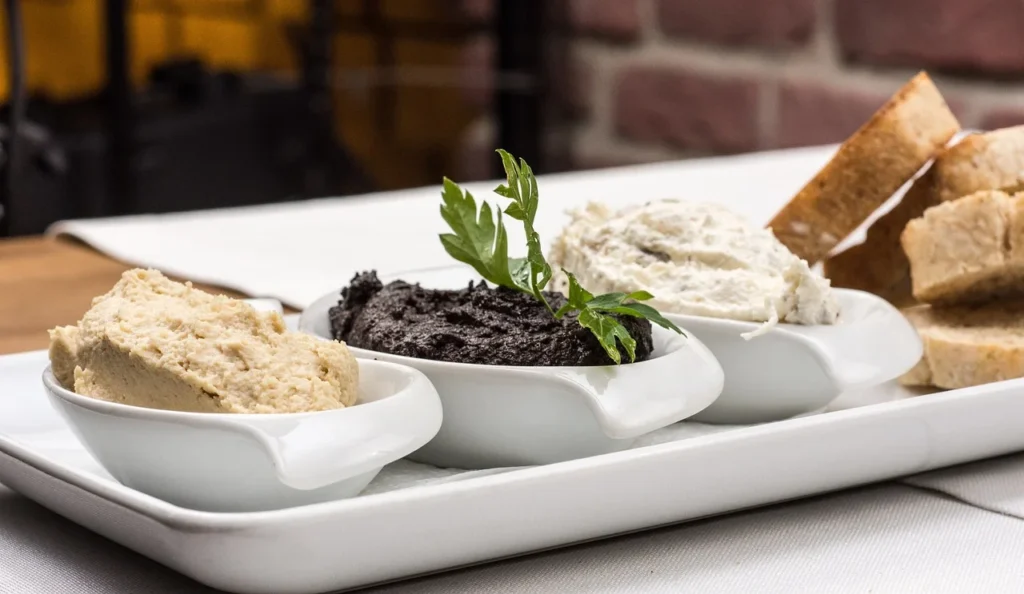

A couple roasted garlic cloves are often added as well for extra depth of flavor. Like the classic version, olive oil helps bind the ingredients into a spreadable paste. This contemporary take on tapenade makes for an intriguing condiment to serve with meats, cheeses or veggies for parties and appetizers. Its versatile blend of flavors also allows the olive and roasted red pepper tapenade to be used in diverse cooking applications.
Roasted Garlic Tapenade
In addition to variations featuring olives and peppers, garlic lovers will enjoy a roasted garlic tapenade. Several whole bulbs of garlic are roasted until very soft and caramelized. The cloves are then mashed together with olive oil to form a buttery, mellow spread. Some recipes add capers or herbs for extra zing. On its own, roasted garlic tapenade pairs beautifully with crusty bread. It also adds intense garlic flavor to dishes when used in cooking. The mellow roasted tones are less sharp than raw garlic, making this an elegant take on tapenade perfect for garlic enthusiasts. A small amount enhances everything from pasta to roasted meats with an unforgettable savory-sweet profile.
Conclusion
This article talked about how to make and use roasted red pepper and garlic tapenade. It can be a dip or go in foods. The tapenade is colorful and tastes great on bread. You can mix it into many things from pasta to meat. There are lots of ways to try it. Have fun cooking with tapenade and finding your favorite recipes. It will make your meals more yummy!
FAQs
What is tapenade spread made of?
Tapenade is traditionally made from olives, capers, and olive oil that are chopped or finely crushed and blended into a spreadable paste. Modern versions may add roasted red peppers and garlic.
What can I use tapenade for?
Tapenade can be used as a spread for bread, canapés, starters, and crostini. It can also be stirred into pasta dishes and used to make sauces or as a marinade for meat, casseroles, stews. A spoonful can be added to pizza dough for extra flavor.
When should you eat tapenade?
Many enjoy eating tapenade with artichokes, grilled fish, or roast chicken. It’s lovely smeared on tartines or fresh goat cheese. Try different tapenade flavors spread thick on toasted baguette slices drizzled with olive oil and garlic or herbs de Provence as a prelude to a great meal.
Are canned roasted red peppers good for you?
While jarred roasted red peppers may be slightly less nutritious than homemade, they are still an excellent source of antioxidants like vitamin C that help promote collagen synthesis and protect cells from free radical damage. The smoky, tangy flavor they add to dishes makes them worth including.
Why is it called tapenade?
The name “tapenade” comes from the French Provençal region. Capers were popular in tapenade since ancient Roman times and the spread gained popularity throughout southern France and Italy thousands of years earlier with traditional variants like Roasted Red Pepper and Garlic Tapenade.


